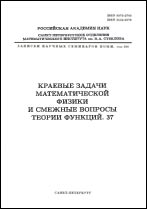|
|
Zapiski Nauchnykh Seminarov LOMI, 1977, Volume 68, Pages 51–61
(Mi znsl2001)
|
 |
|
 |
Herbrand strategies and the “greater deducibility” relation
S. Yu. Maslov, S. A. Norgela
Abstract:
A Herbrand strategy $T$ is that algorithm which for an arbitrary prenex formula $F$ gives a sequence of its Herbrand disjunctions. Let $F^T$ be the first tautology in this sequence. $T$ is complete if for every deducible $F$, FT exists. The strategy $T$ gives k superfluous terms for $F$ if k disjuncts can be removed from $F^T$ while preserving its tautological character; $T$ is optimal for $F$ if there exists no Herbrand disjunction for $F$ shorter than $F^T$. There are complete strategies that give arbitrarily small proportion of terms for all $F$. There are also strategies that work with incomplete information about $F$ (e.g., with the signature of $F$ or a list of its elementary subformulas). For any such complete strategy we can construct a class of formulas for which the proportion of superfluous terms tends to 1 as the length of the formula tends to $\infty$. However, there is no possible algorithm for finding the superfluous terms which may be dropped. Even for strategies that require complete and uniform review of all possible permutations of terms (for a given signature), the class of formulas for which $T$ is optimal is undecidable. The proof uses properties of the relation "$F$ is more deducible than $G$", studied in terms of the general theory of calculi.
Citation:
S. Yu. Maslov, S. A. Norgela, “Herbrand strategies and the “greater deducibility” relation”, Theoretical application of methods of mathematical logic. Part II, Zap. Nauchn. Sem. LOMI, 68, "Nauka", Leningrad. Otdel., Leningrad, 1977, 51–61; J. Soviet Math., 15:1 (1981), 28–33
Linking options:
https://www.mathnet.ru/eng/znsl2001 https://www.mathnet.ru/eng/znsl/v68/p51
|

| Statistics & downloads: |
| Abstract page: | 179 | | Full-text PDF : | 61 |
|




 Contact us:
Contact us: Terms of Use
Terms of Use
 Registration to the website
Registration to the website Logotypes
Logotypes








 Citation in format
Citation in format 